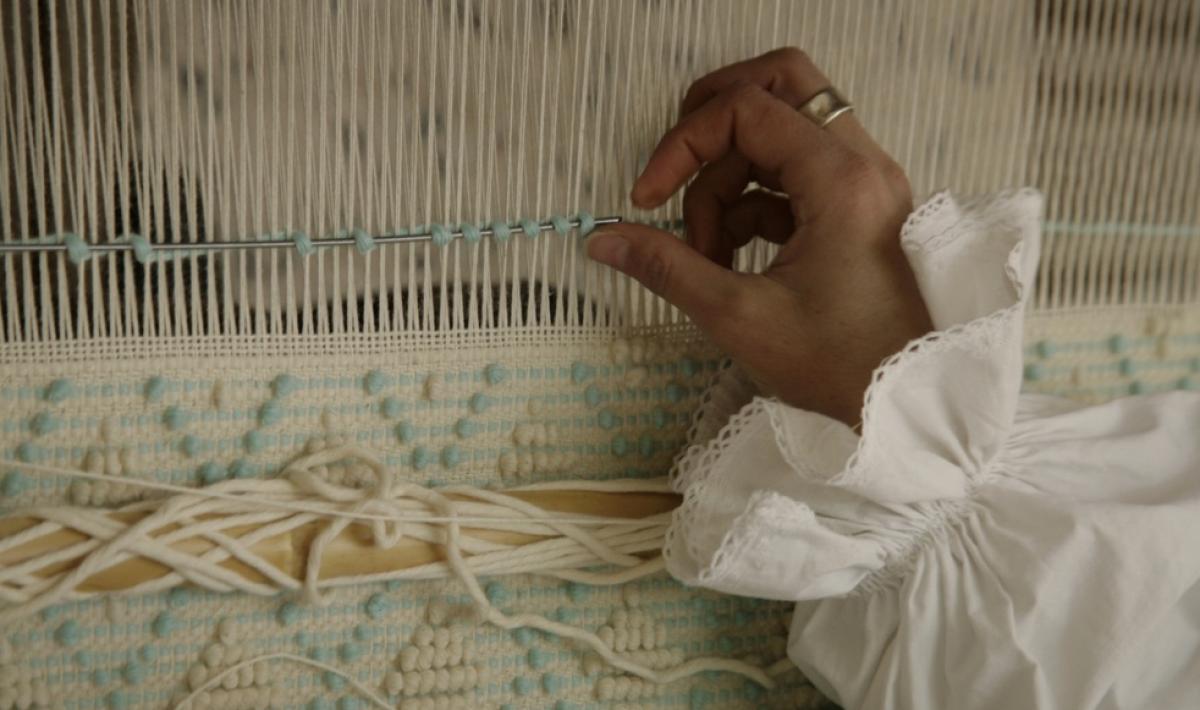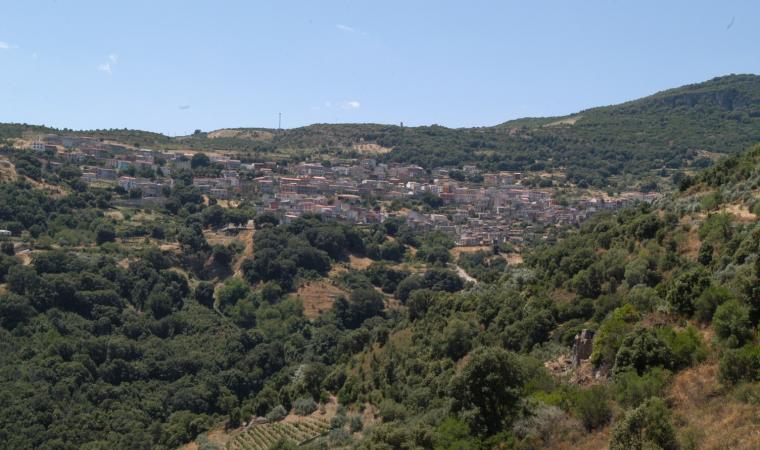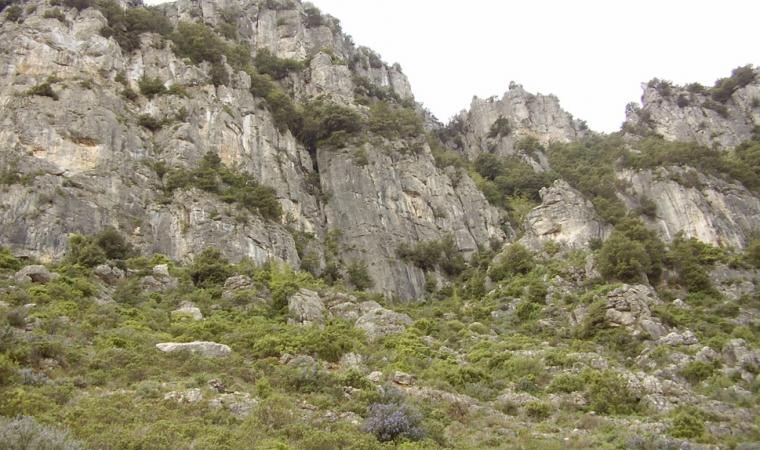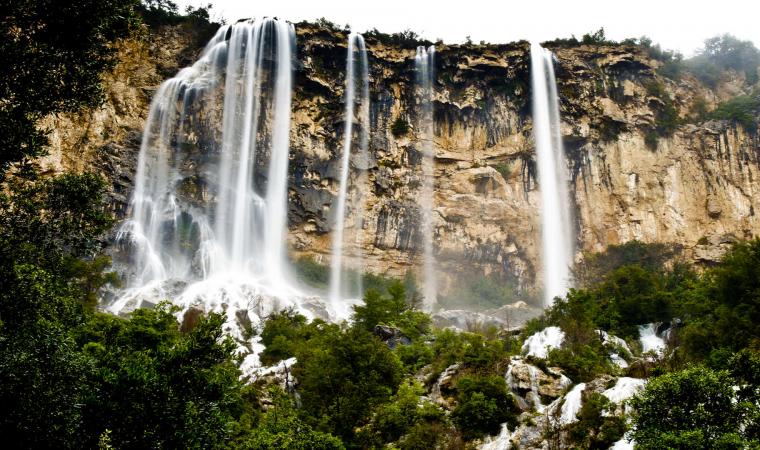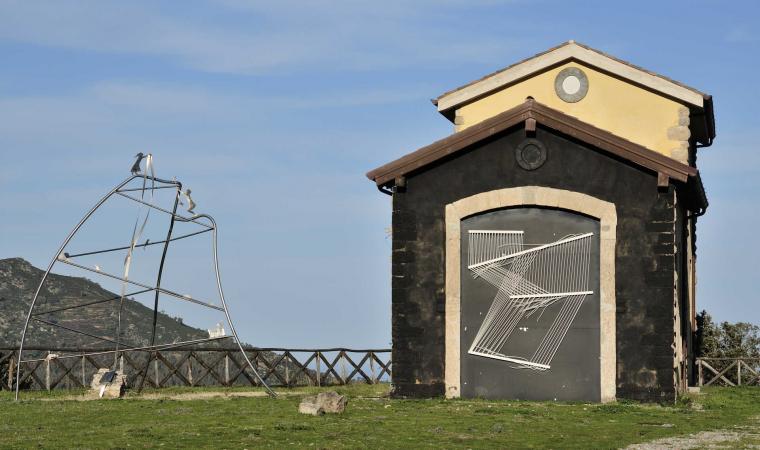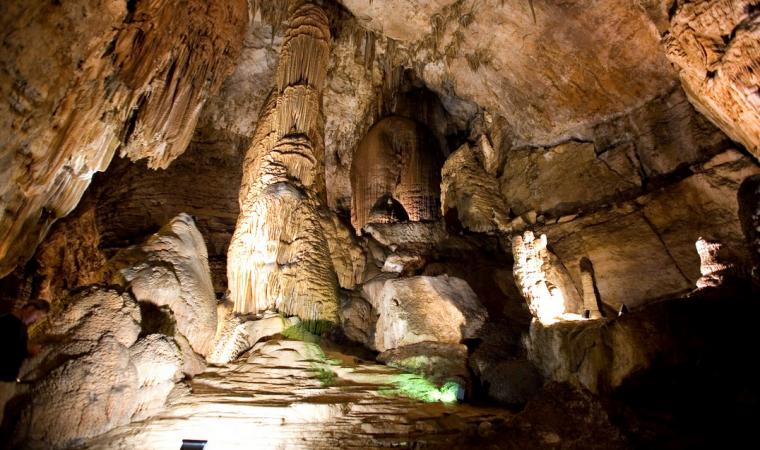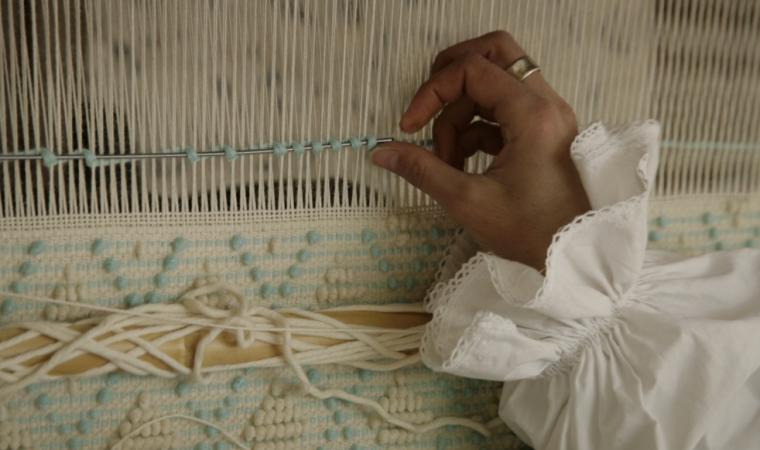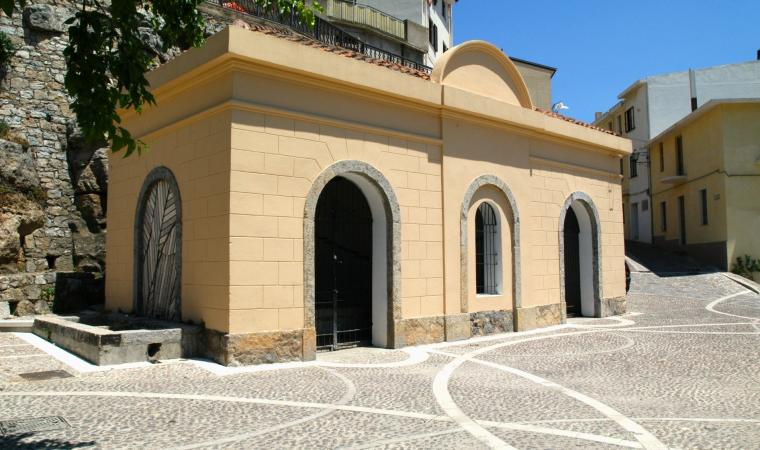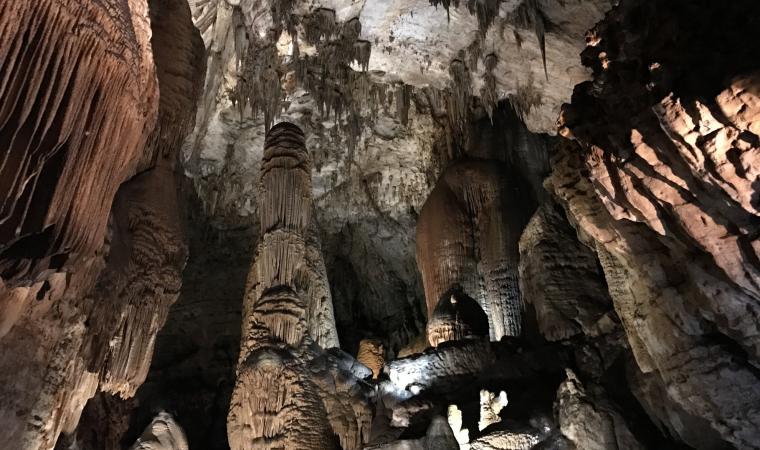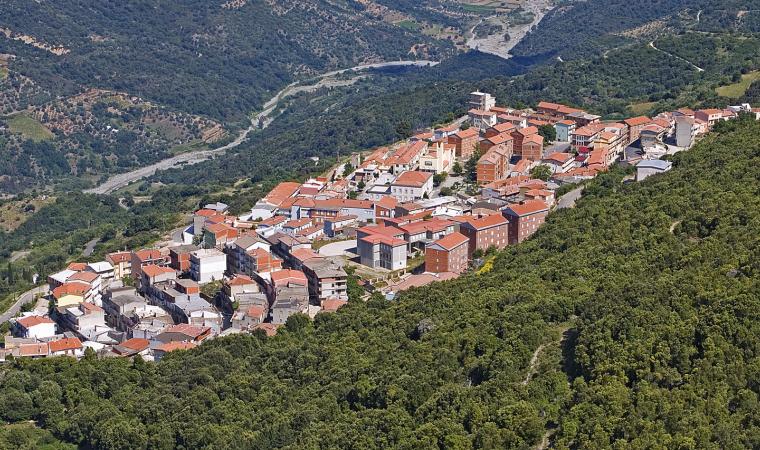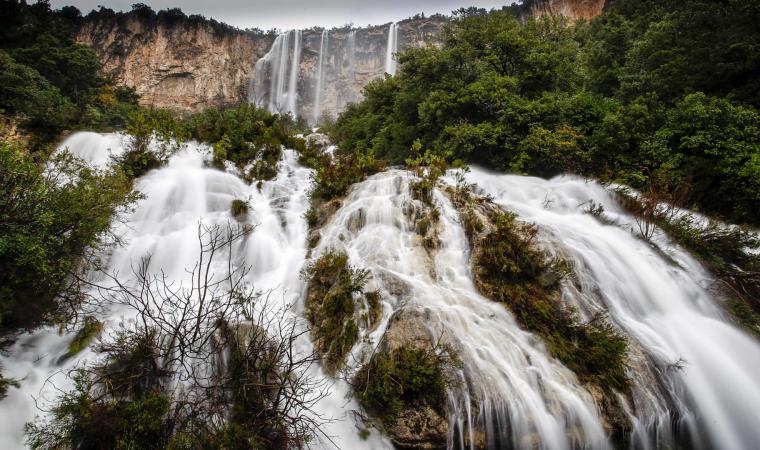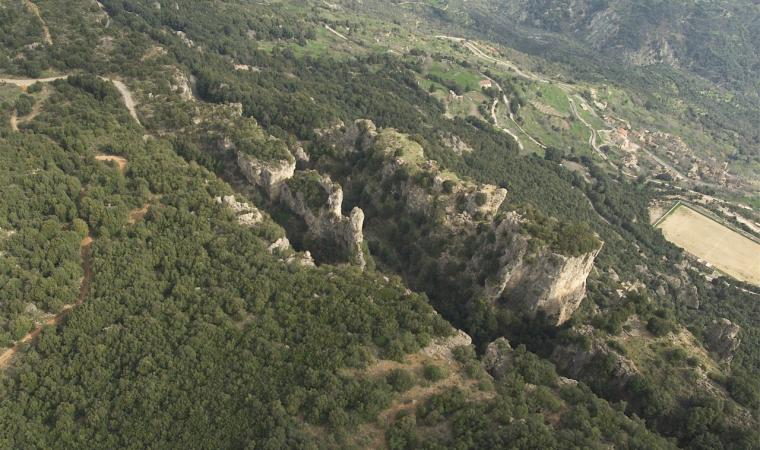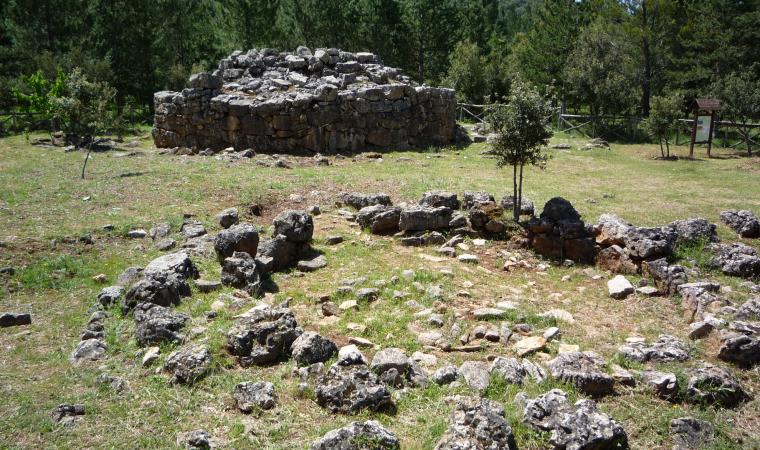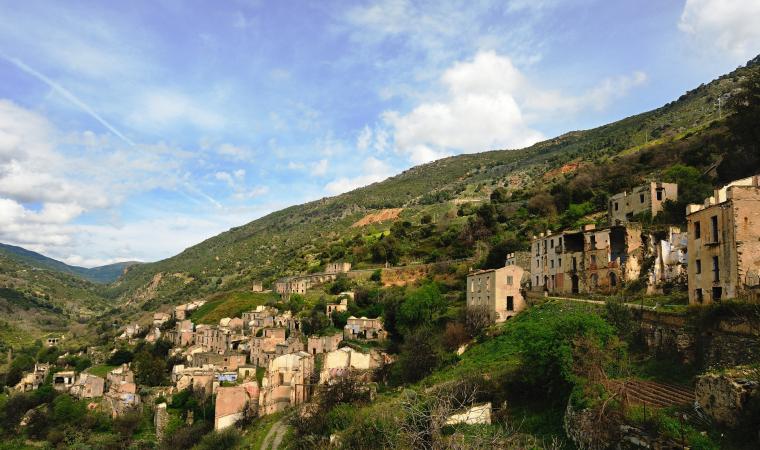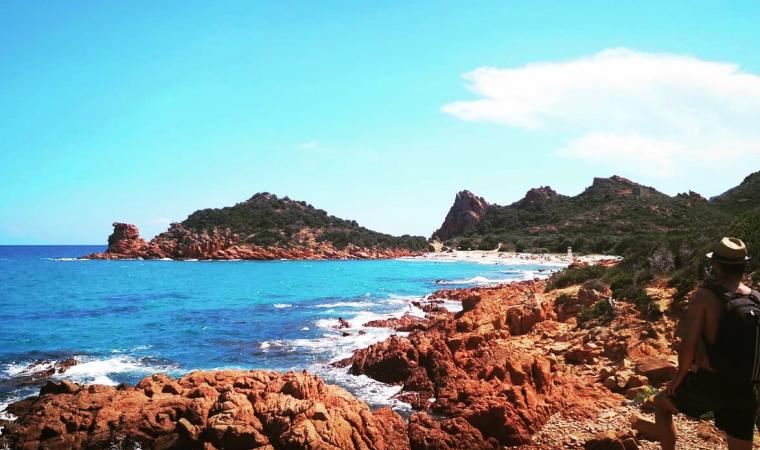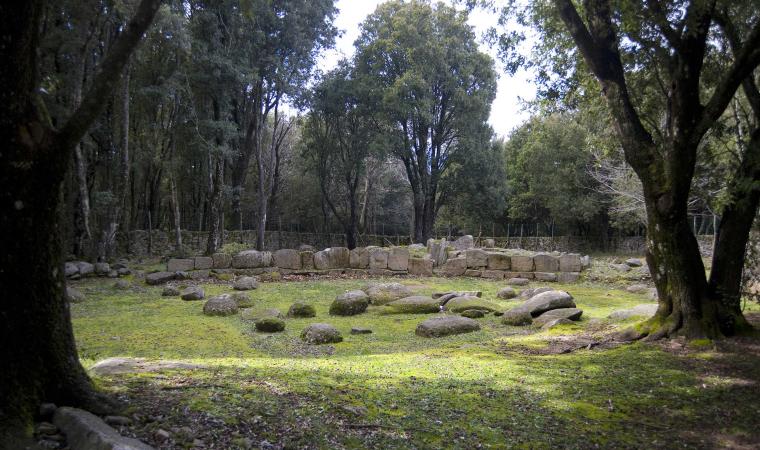With a high percentage of people renowned for their longevity among its 1500 inhabitants, it contributes to one of the world’s five Blue Zones. Ulassai lies in the most inland part of the province of Ogliastra, at an altitude of almost 800 metres, between the limestone buttes with their slopes covered in evergreen forests in which the Wildlife Oasis of Girisai is located and where spectacular caves open up, like that of Is Lianas. Above all, there is Su Marmuri, 'the marble': you can walk for 850 metres through the rooms with high walls, little lakes and stalactites that join with stalagmites to form huge columns. To reach one of the most impressive in Europe, you can walk along paths amidst deep gorges, which are the destination of free climbing professionals. Underground waters emerge from the grottoes and, beneath Su Marmuri, they form the Lecorci Waterfalls, which gush wildly from smooth rock faces. The waters flow to meet the Lequarci Waterfalls, the biggest on the Island, with a drop of almost one hundred metres and a maximum width of 70. Downstream, there is a myriad of small lakes in the locality of Santa Barbara. Here, in the forest, you can visit a little Byzantine church. Around it, there are Is Cumbessias, which acted as lodgings for the pilgrims during celebrations dedicated to the saint. Still today, the celebrations most heartfelt by the Ulassai community take place at the end of May, with a procession, accompanied by launeddas and folk groups, a feast in which you can taste the local delicacies and a poetry contest.
The village is an open air museum, in harmony with architecture, nature and works of art. Creating an even lovelier atmosphere is the Stazione dell'Arte (Art Station), in which you will find the 'multifaceted' genius of Maria Lai, the most famous citizen of Ulassai. Before the advent of the railway (1893), the village was connected to nowhere outside of Ogliastra. This isolation led to the preservation of ancient traditions, like the use of the horizontal loom, the artisan production of cheeses and hams and bread-making in wood-burning ovens: there is one in every house. To the east, the valley of the Rio Pardu river is cultivated with olive groves and vineyards where well-known olive oil and Cannonau wine are produced. Strawberry tree honey and typical local dishes like culurgiones a ispighitta and coccoi prena are also famous. On All Saints Day, there is the collection of alms of Is Animeddas, which is similar to Halloween. Su Maimulu is the famous carnival in Ulassai, which begins on St Sebastian's Day (20 January). The theatrical festival of the Tacchi (Buttes) is very popular. In the territory you will find endless evidence of prehistoric times. The most important is the Nuraghe S'Ulimu (1500-900 BC), at an altitude of 700 metres: two massive towers joined by a thick curtain wall. It is located near eight Domus de Janas, a Dolmen, three Tombs of Giants and three Nuragic villages. The Nuraghe Pranu, the complex of Nuragheddu, the fortress of Seroni and the megalithic village of Seddorrulu are also well-preserved.

